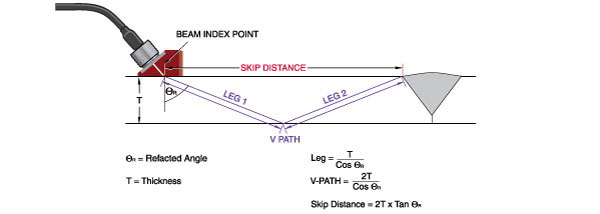×
LEGEND:
X = not permitted
L = weld length under consideration
NOTES:
1. For adjacent imperfections, see Clause 6.2.3.
2. For the purpose of radiographic examinations and routine ultrasonic examinations, h shall be taken as 2 mm. Where an ultrasonic or a radiographic examination indicates that h may be greater than 2 mm, h shall be determined by sectioning or vertical ultrasonic sizing in accordance with AS 2207.
3. Any imperfections that are suspected of being lamellar tears should be recorded on the NDE report and referred to the principal for consideration.
4. See also Clause 3.2.1.
5. For any weld length under consideration, the imperfection level shall be calculated by multiplying the length of each imperfection by its weighting factor and adding these weighted lengths to determine a total imperfection level. The total imperfection level shall be less than the maximum permissible imperfection level.
6. Any imperfections shall not exceed a height equal to the greater of 2 mm and t/20, within a distance of t of the end of a weld.
7. Where the length of a continuous weld exceeds 1 m, the maximum permissible imperfection level shall not be exceeded in any continuous weld length of 1 m.
8. Where continuous or adjacent imperfections cross the division between examination lengths, the examination lengths shall be relocated to include the most severe combination of imperfections.
9. Porosity is not considered to be a particularly serious imperfection and is cause for rejection of a weld only where it is present in sufficient quantity to render difficult an inspection for the other imperfections listed in Table 6.2.1. Any such level of porosity shall be recorded and referred to the principal for consideration. For radiographic inspections, porosity levels representing a loss of projected area of not more than 2% are permitted. If required, reference may be made to porosity charts in AS 4037, to assist in assessing the appearance of this level of porosity on a radiograph.





